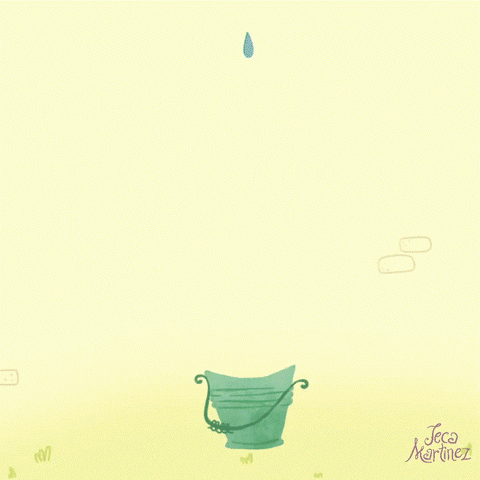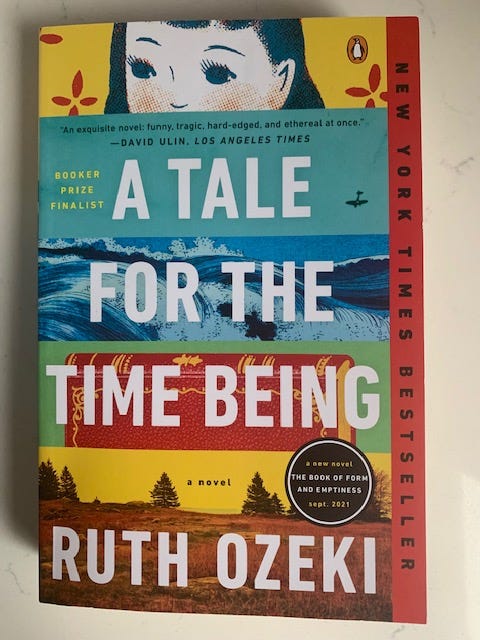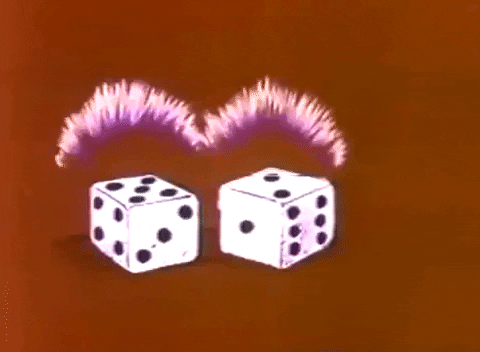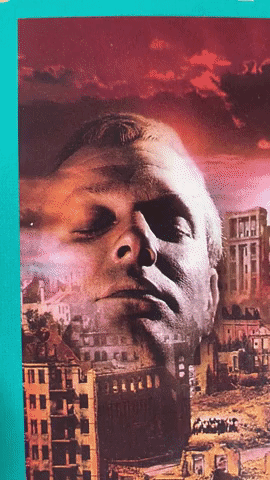'A Tale for the Time Being' by Ruth Ozeki
Books on GIF is 6 today; 'The past is weird. I mean, does it really exist?'—Review #184

We hope all the moms enjoy their big day today. It’s a big day for us, too: Books on GIF turns six! We’re feeling like:

It’s hard to believe how far we’ve come. Our first newsletter went to 15 people on May 8, 2016. Today’s edition will go to more than 1,500. We’ve had a lot of fun along the way, but we cherish most our connection to you, our readers. Your enthusiasm for reading, love of books and always-good recommendations energize us, and we are full of gratitude. Whether you’ve been with us since the Obama administration or subscribed this week, Donna and I want to say as sincerely as GIFs can convey:
‘A Tale for the Time Being’ is perfect for our anniversary. Several of our readers recommended the 2013 Booker Prize finalist, and it’s a beautiful and philosophical story about humanity and memory.
Here’s the cover:

A Hello Kitty lunchbox washes ashore on a remote island north of Vancouver where it is found by Ruth, a writer who lives there. Ruth opens it to find a copy of Marcel Proust’s ‘À la recherche du temps perdu,’ some letters, a notebook and a watch. Further examination of Proust’s novel reveals all the original pages have been replaced by the diary of a teenage girl living in Tokyo named Nao. Nao is a ‘time being,’ a concept explained in the excerpt below. As Ruth reads Nao’s diary, she learns the teen has been brutally bullied at school, has a 104-year-old great-grandmother who’s a Zen Buddhist nun living in a remote temple, has a depressed and suicidal father, and is headed down that path, too. Ruth is concerned for Nao’s wellbeing, but the situation seems too weird to be true. Is Nao a real person? Is she in danger? How long was the lunchbox in the Pacific Ocean? How did it get to Ruth’s tiny island? Is it a message-in-a-bottle cry for help? Or flotsam from the earthquake and tsunami that struck Japan in 2011? And if she finds Nao, what then? Ruth includes her husband, Oliver (an artist whose work involves plant and tree installations), and her nosey neighbors in her mission to unravel these mysteries. The narrative zigzags from Ruth’s efforts to find Nao as she confronts hard realities of her own past to Nao’s discoveries about her family history and secrets going back to before World War II. It’s riveting reading. I flew through the last 100-plus pages in one sitting (a page count almost unheard of for me, a slow reader), like:

After I finished ‘A Tale for the Time Being,’ I learned Ozeki is a Zen Buddhist priest in addition to an author and a filmmaker. How cool is that? Zen teachings and practices are pillars of the book, from an emphasis on meditation to understanding the nature and connection of things. It inspired me to learn more about it. Several other points:
I was glad to see Ruth and Oliver, a middle-aged childless couple each with their own creative lives, work through their personal and relationship issues while collaborating to solve the mystery.
I loved Ozeki’s showing that plants and animals have their own ways of remembering and keeping score; whales, wolves and woodlands alike recall the predations of men.
And I, a former philosophy major, geeked out on all the philosophy references, from connecting quantum mechanics to metaphysics to Martin Heidegger shout-outs. I mean, how often is ‘Sein und Zeit’ name-checked in a major novel?! A stand-out moment is when Nao’s father makes an origami animal with a page torn from a philosophy book. I loved this metaphor for how the life of the mind should be shaped to and balanced with life in the physical world. It had me like:

But please don’t interpret my enthusiasm for philosophy to mean this novel is dense and dull. Far from it. ‘A Tale for the Time Being’ is an enjoyable and enriching book. It tackles some of life’s toughest questions and circumstances with crisp writing that zips. Ruth’s quest to understand Nao puts her on a path to a deeper understanding of herself, making this novel a clear-eyed, thoughtful and inspiring tale of empathy. ‘A Tale for the Time Being’ is the kind of book that makes me excited for the next six years of Books on GIF. Thank you to everyone who recommended it to me. I, too, highly recommend this book.
How it begins:
Hi!
My name is Nao, and I am a time being. Do you know what a time being is? Well, if you give me a moment, I will tell you.
A time being is someone who lives in time, and that means you, and me, and every one of us who is, or was, or ever will be. As for me, right now I am sitting in a French maid café in Akiba Electricity Town, listening to a sad chanson that is playing sometime in your past, which is also my present, writing this and wondering about you, somewhere in my future. And if you’re reading this, then maybe by now you’re wondering about me, too.
You wonder about me.
I wonder about you.
Who are you and what are you doing?
Are you in a New York subway car hanging from a strap, or soaking in a hot tub in Sunnyvale?
Are you sunbathing on a sunny beach in Phuket, or having your toenails buffed in Abu Dhabi?
Are you male or female or somewhere in between?
My rating:

‘A Tale for the Time Being’ by Ruth Ozeki was published by Penguin Books in 2013. 422 pages, including appendices. $16.56 at Bookshop.org.
What’s next:
Before you go:
ICYMI: Review #183
Read these: Two articles jumped out at me this weekend.
‘Meet the New Old Book Collectors’ in The New York Times highlights the trend of younger people getting into the rare book world. Two things in this piece floored me: 1) The existence of a ‘secret’ bookstore in Brooklyn selling rare gems (I must find it!), and 2) the existence of the Rare Book School at the University of Virginia. (I must take a course!)
‘Intimate and Invasive’ in The New York Review of Books is about prostate cancer. I find cancer-treatment articles fascinating, but this one included an all-too-rare exploration of the power of metaphor in aiding convalescence. It also set me on a quest for Anatole Broyard’s ‘Intoxicated by my Illness.’
Read this, too: This thread of Orson Welles trash-talking famous directors and producers made me chuckle. I loved the one where Welles was going to fight David O. Selznick in someone’s backyard over Laurence Olivier being cast in ‘Rebecca.’
Thanks for reading, and thanks especially to Donna for editing this newsletter!
With excitement for what year seven of Books on GIF will bring,

MPV










i love this review! happy anniversary!
Happy six years! That makes you a Substack pioneer I feel, so impressive. Enjoy the day!